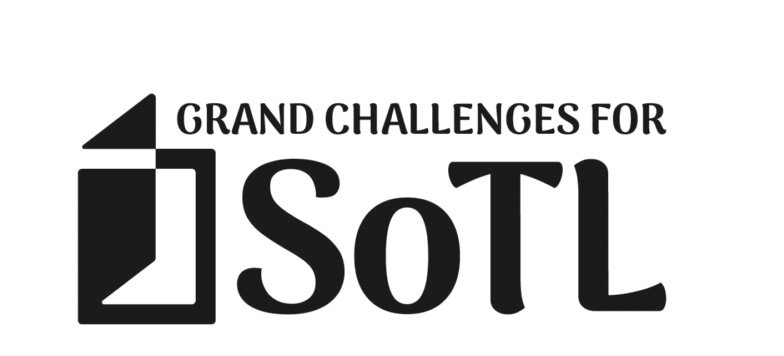A conditional sentence describes a condition that is necessary for a particular outcome to occur.
Conclusions
Compare and Contrast Essays
Commonly Misused Words
Commonly Confused Words
Commas
Comma Splices
Close Reading for Literature
Clauses
Book Reviews
Business Writing
Business Reports
Articles
Apostrophes
Annotated Bibliographies
Adjectives
Abstracts
Bad Arguments
While preparing a response to any lecture, article, or position, consider the following limitations/flaws when composing your own argument and evaluating evidence provided by an author of a text. For more information on obstacles to critical thinking and bad arguments, see “The Illustrated Book of Bad Arguments” here.
Biased Reasoning
Perceptions: how an argument is understood. Pay attention to personal background that can change the way an argument is processed by the reader.
Example: Because my uncle has only lived in Germany, he does not understand that you can drive for 24 hours in one direction in Canada and still be in the same country at the end of the day.
Confirmation bias: agreeing with a premise simply because it confirms personal belief. Avoid confirmation bias by checking facts and statistics to ensure that arguments have adequate evidence.
Example: It is obvious that gun control is necessary to prevent crimes
Personal prejudice: any personal background brought into an argument.
Example: Gun control is necessary. If gun control had been in place four years ago, many deaths in my neighbourhood could have been prevented.
Ignorance: unfamiliarity with an issue. This makes it difficult to come to an unbiased conclusion. Avoid ignorance by conducting research on different views of an issue.
Example: Young children, who are abducted and sold to become sex workers, continue down this path of ruin because they do not know any other way of life.
Uncertainty of Facts
Begging the question: when the conclusion to an argument is already used as one of the pieces of evidence. Often the conclusion will be re-worded to appear as a new step, but the conclusion and evidence still rely on the other to justify the other’s position.
Example: You are wrong because you do not make any sense.
Correlation and causation: two distinct aspects of logical reasoning. Correlation is a strong connection between two steps in an argument. Causation happens only when the second step is a result of the first step.
Example: Smoking and developing lung cancer have a high correlation; however, not all smokers get lung cancer. Therefore, smoking does not always cause lung cancer.
False analogy: an argument made by comparing two similar items and assuming that because they are similar in one way, they will also be similar in another way.
Example: Forcing people to register their guns is just like the Nazis forcing Jews to register with the government.
The slippery slope argument: an attempt to discredit a position by presenting increasingly worse hypothetical future scenarios. This argument assumes that the first step will lead to a larger consequence.
Example: Euthanasia should not be allowed. If we legalize killing some people, where will it stop? A society that accepts euthanasia will turn into a society where it is acceptable to walk down the street and shoot anyone who gets in your way.
Hasty generalization: too little or to much information to make an informed decision, and a conclusion is made before all information is gathered and organized.
Example: All 30 women in the study had been subjected to some form of a physical assault. Therefore, all women will be assaulted at some point in their lives.
The strawman argument: an argument that has been misrepresented and oversimplified to make an argument easier to attack.
Example: Darwinists will let you believe that we evolved from monkeys, such as those that eat bananas at the zoo.
Use of Language
Assuring expressions: use of language that placates, soothes, or pleases in a way that damages or artificially enhances an argument.
Example: Any reasonable and intelligent person can see that gun control is necessary to prevent future crimes.
Judgmental language: language that draws conclusions too quickly and damages the argument.
Example: Capital punishment is wrong and anyone who supports it is a murderer.
Euphemisms: harsh and exaggerated expression of an issue, which misleads the reader to believe that an issue is greater than it is.
Example: Helping a patient to kick the bucket so to speak, in an effort to alleviate a patient’s suffering, does not help patient families or medical institutions.
Weasel words: ambiguous and informal terms used to sound authoritative, which do not add value to an argument.
Example: Astrophysics scholars argue that extraterrestrials have already visited Earth.
Poor Persuasion:
Personal attack/smear campaign: a personal attack instead of an argument.
Example: The author suggests that capital punishment is a great thing, which is unsurprising given that this judge has sentenced over 100 people to death.
Bandwagon: an author’s conclusion(s) are based on facts that many believe to be true.
Example: Both school boards approved the cut to extracurricular activities due to low student enrollment, so our school board should make a similar decision.
False dilemmas: alternatives presented in an argument that do not cover all reasonable alternatives. Readers are usually given one example that is unreasonable and, as a result, an alternative position seems more appealing.
Example: Either people change their ways regarding the environment or we will all die in 10 years from lack of food and the chemicals in our polluted air and water.
Sunk-cost fallacy: an argument based on excessive time or money already invested as a means to ineffectively supporting a conclusion.
Example: I should finish writing this paper on a topic I hate instead of changing the topic because I have already put 45 hours into researching the topic.
Emotional appeals: claims made by appealing to readers’ emotions.
Example: Windmill sickness has led to the deaths of 20 people. One was a young teen from Southwestern Ontario who died a few weeks before her high school graduation.
Appeal to authority: an author appeals to figures which have no authority over or within the facts of an argument.
Example: A local writer states that the cost of university tuition is crazy in Nova Scotia, so measures should be taken to reduce tuition rates.
Oral Presentation Checklist
To feel confident of your presentation before you begin, use this check list. Make sure that you have done everything you can to prepare. It will make you feel more at ease and poised, not only to your subject, but also to your audience.
Preparation
arrive prior to the presentation
check audio-visual equipment
demonstration models
dress appropriately
provide handouts at the beginning
Opening Remarks
greeting the audience and introduce yourself
grab attention: do this with a visual or statement, but make it relevant
state the topic directly: what the presentation is about
foreshadow the talk: provide the audience with an overview
Physical Attributes
voice qualities: clarity, volume, inflection, vocalized pauses
tempo, speed of delivery
eye contact
posture
movement in the space
gesture and distracting mannerisms: hold a pen or paper
Visual
Do you have too many slide?—10-20-30 Rule (Guy Kawasaki)
check that the visual match your content
Content
word choice, grammar, language level
evidence of organization
coherent transitions
suitable level of difficulty
knowledgeable and accurate information
new and interesting information
persuasive
Attitude
projecting enthusiasm
strategies for dealing with trait and situational anxiety
Closing Remarks
review of information
thank the audience
asking if there are questions, if required






















